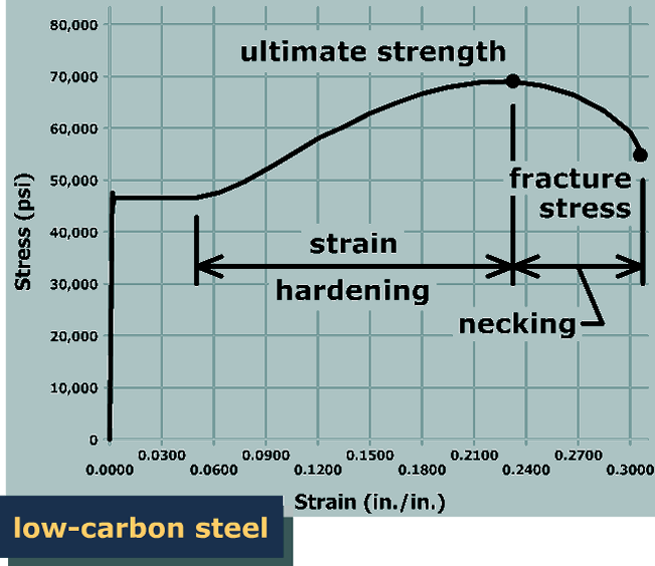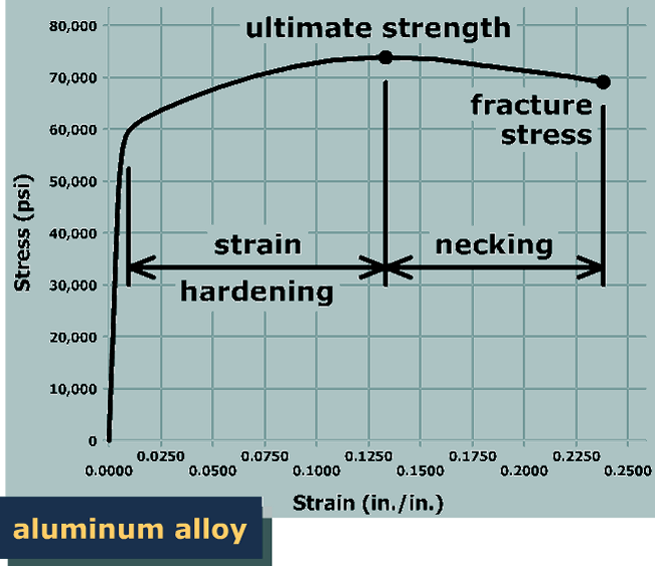After the ultimate strength is reached, the specimen starts to neck. As contraction within the localized neck region grows more pronounced, the cross-sectional area continually decreases. The engineering stress calculations, however, are based on the original specimen cross-sectional area. Consequently, the engineering stress computed at fracture and shown on the stress-strain diagram is not an accurate reflection of the true stress in the material.

